Human early-onset dementia caused by DAP12 deficiency reveals a unique signature of dysregulated microglia
- PMID: 36658241
- PMCID: PMC9992145
- DOI: 10.1038/s41590-022-01403-y
Human early-onset dementia caused by DAP12 deficiency reveals a unique signature of dysregulated microglia
Erratum in
-
Publisher Correction: Human early-onset dementia caused by DAP12 deficiency reveals a unique signature of dysregulated microglia.Nat Immunol. 2023 Mar;24(3):558. doi: 10.1038/s41590-023-01465-6. Nat Immunol. 2023. PMID: 36807644 No abstract available.
Abstract
The TREM2-DAP12 receptor complex sustains microglia functions. Heterozygous hypofunctional TREM2 variants impair microglia, accelerating late-onset Alzheimer's disease. Homozygous inactivating variants of TREM2 or TYROBP-encoding DAP12 cause Nasu-Hakola disease (NHD), an early-onset dementia characterized by cerebral atrophy, myelin loss and gliosis. Mechanisms underpinning NHD are unknown. Here, single-nucleus RNA-sequencing analysis of brain specimens from DAP12-deficient NHD individuals revealed a unique microglia signature indicating heightened RUNX1, STAT3 and transforming growth factor-β signaling pathways that mediate repair responses to injuries. This profile correlated with a wound healing signature in astrocytes and impaired myelination in oligodendrocytes, while pericyte profiles indicated vascular abnormalities. Conversely, single-nuclei signatures in mice lacking DAP12 signaling reflected very mild microglial defects that did not recapitulate NHD. We envision that DAP12 signaling in microglia attenuates wound healing pathways that, if left unchecked, interfere with microglial physiological functions, causing pathology in human. The identification of a dysregulated NHD microglia signature sparks potential therapeutic strategies aimed at resetting microglia signaling pathways.
© 2023. Springer Nature America, Inc.
Conflict of interest statement
Competing Interests Statement
M.C. is a member of the Vigil Neuro scientific advisory board (SAB), is consultant for Cell Signaling Technology, has received research grants from Vigil Neuro during the conduct of the study and has a patent to TREM2 pending. The remaining authors declare no competing interests.
Figures
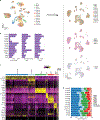




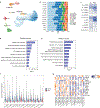
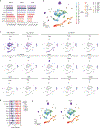

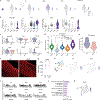
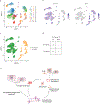



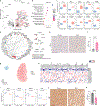

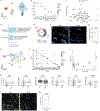
Comment in
-
A polarizing answer - microglia in Nasu-Hakola disease.Nat Immunol. 2023 Mar;24(3):379-381. doi: 10.1038/s41590-023-01440-1. Nat Immunol. 2023. PMID: 36823406 No abstract available.
References
-
- Ulland TK & Colonna M TREM2 - a key player in microglial biology and Alzheimer disease. Nat Rev Neurol 14, 667–675 (2018). - PubMed
Methods-only References
Publication types
MeSH terms
Substances
Supplementary concepts
Grants and funding
LinkOut - more resources
Full Text Sources
Medical
Molecular Biology Databases
Miscellaneous

